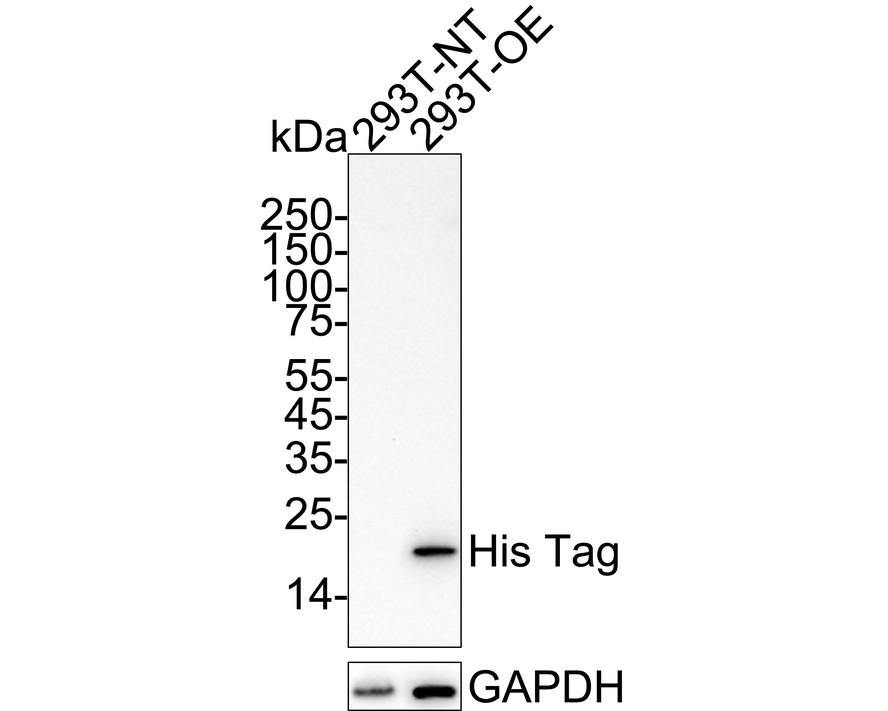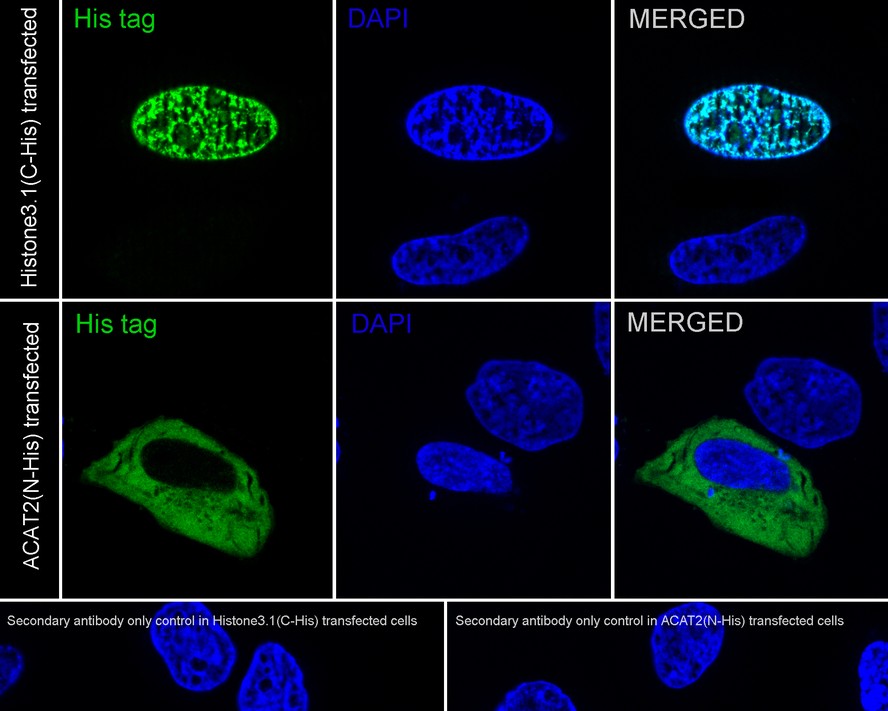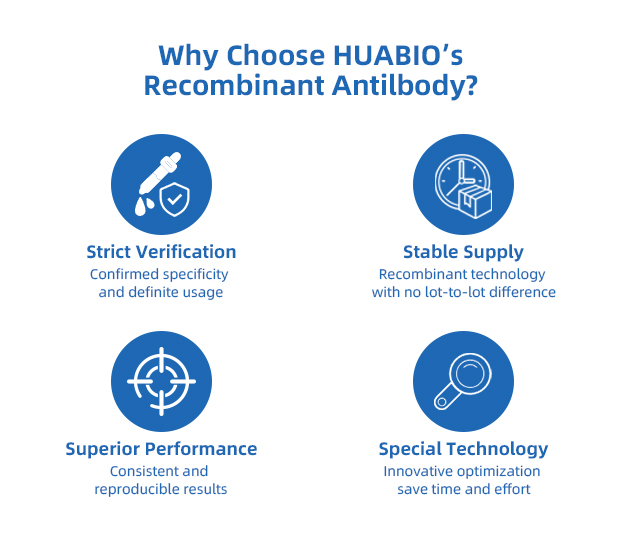His tag, AlpSdAbs® VHH(Biotin) Alpaca Monoclonal Antibody

cat.: HA710192
| Product Type: | Alpaca monoclonal, primary antibodies |
|---|---|
| Applications: | Purification, WB, IF-Cell, ELISA |
| Clonality: | Monoclonal |
| Storage condition: | Store at –20 ℃(Avoid freeze / thaw cycles) |
| Storage buffer: | 10mM PBS (pH 7.5), 0.05% sucrose, 0.1% trehalose, 0.01% proclin300 |
| Concentration: | 1ug/ul |
| Purification: | Recombinant Expression and Affinity purified |
| Immunogen: | 6*His tag fusion protein |
| Recommended Dilutions:
WB IF-Cell ELISA IP |
1:5,000-1:20,000 1:100-1:500 1:5,000-1:20,000 1-2ug/sample,BLI (biolayer interferometry),SPR (surface plasmon resonance), Dilution factors are presented in the form of a range because the optimal dilution is a function of many factors, such as antigen density, permeability, etc. The actual dilution used must be determined empirically. |
Images

|
Fig1:
Western blot analysis of His tag on different lysates with Alpaca anti-His tag, AlpSdAbs® VHH(Biotin) antibody (HA710192) at 1/5,000 dilution. Lane 1: 293T transfected with His-tagged empty control cell lysate Lane 2: 293T transfected with His-tagged Histone H3.1 (C-terminal) cell lysate Lysates/proteins at 10 µg/Lane. Exposure time: 3 minutes; ECL: K1801; 4-20% SDS-PAGE gel. Proteins were transferred to a PVDF membrane and blocked with 5% NFDM/TBST for 1 hour at room temperature. The primary antibody (HA710192) at 1/5,000 dilution was used in 5% NFDM/TBST at 4℃ overnight. Streptavidin-HRP Secondary Antibody at 1/20,000 dilution was used for 1 hour at room temperature. |

|
Fig2:
Immunocytochemistry analysis of 293T cells labeling His tag with Alpaca anti-His tag, AlpSdAbs® VHH(Biotin) antibody (HA710192) at 1/100 dilution. 293T cells, transfected with Myc-tagged empty control, Histone H3.1 (C-terminal) or ACAT2 (N-terminal) expression vector, respectively, were fixed in 4% paraformaldehyde for 15 minutes at room temperature, permeabilized with 0.1% Triton X-100 in PBS for 15 minutes at room temperature, then blocked with 1% BSA in 10% negative goat serum for 1 hour at room temperature. Cells were then incubated with Alpaca anti-His tag, AlpSdAbs® VHH(Biotin) antibody (HA710192) at 1/100 dilution in 1% BSA in PBST overnight at 4 ℃. Streptavidin-FITC was used as the secondary antibody at 1/1,000 dilution. Nuclear DNA was labelled in blue with DAPI. |

|
Fig3:
Advantages of using an Alpaca Recombinant Secondary 1. Smaller size Nanobodies are 1/10 the size of a traditional antibody (~15 kDa unconjugated). This means that the nanobody can penetrate tissue faster and deeper than other antibodies. 2. Easier to use Due to their simple structure, nanobodies also have the advantage of increased stability and ease of use. 3. Easier production When compared to a more traditional antibody, nanobodies are easier to develop and produce in the lab than monoclonal or polyclonal antibodies. 4. More consistent Since nanobodies are recombinantly produced from clonal DNA, you are guaranteed the same product every time. Comparatively, polyclonal antibodies are produced in live animals and have a very low lot-to-lot consistency while monoclonal antibodies can suffer from drift. 5. Higher Affinity Nanobodies benefit from consistently high binding affinity values. |
Note: All products are “FOR RESEARCH USE ONLY AND ARE NOT INTENDED FOR DIAGNOSTIC OR THERAPEUTIC USE”.